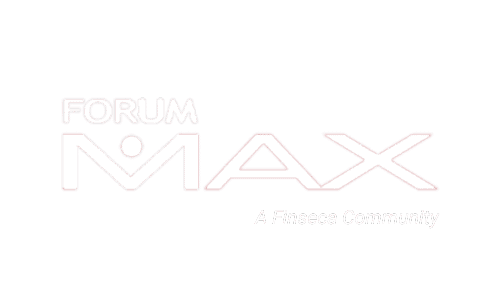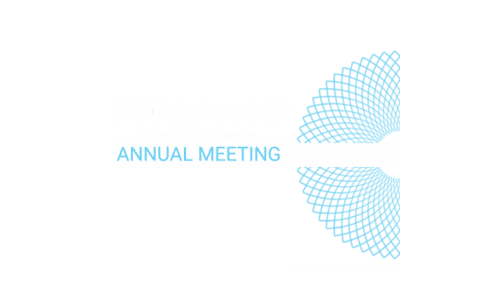
Thursday, 22 September 2016 #WRM16-38
The WRMarketplace is created exclusively for AALU Members by the AALU staff and Greenberg Traurig, one of the nation’s leading tax and wealth management law firms. The WRMarketplace provides deep insight into trends and events impacting the use of life insurance products, including key take-aways, for AALU members, clients and advisors.
The AALU WRNewswire and WRMarketplace are published by the Association for Advanced Life Underwriting® as part of the Essential Wisdom Series, the trusted source of actionable technical and marketplace knowledge for AALU members— the nation’s most advanced life insurance professionals.
TOPIC: Private Foundations or Donor Advised Funds?
MARKET TREND: Charitable giving remains a popular option for clients to achieve charitable and tax planning goals especially in the face of higher income tax rates.
SYNOPSIS: Lifetime philanthropic gifts have substantial appeal for charitably-inclined clients who are incentivized by the desire to see the impact of their charitable plan during life while also receiving a charitable income tax deduction. The method for making these gifts, however, must be tailored to the client’s overall charitable goals. For clients that want to make current charitable gifts but also retain control over the amount and timing of subsequent distributions to charities, private foundations and donor advised funds can provide excellent options. Private foundations provide clients with a way to make large or ongoing charitable contributions and create a multi- generational family legacy. Alternatively, donor advised funds provide clients with a simpler, accessible, and less expensive method for making current charitable gifts while retaining some say over the use of the contribution. Reviewing the fundamental differences between private foundations and donor advised funds can help determine the client’s best option. A chart summarizing these differences is attached.
TAKE AWAY: When discussing charitable contributions with clients, the focus should be placed on their long-term goals. Clients interested in leaving a multi-generational family legacy, creating a philanthropic family governance structure, and earmarking a larger portion of their assets for charitable endeavors are usually better served by private foundations, while clients considering a smaller, one-time contribution who are less interested in long-term family participation are well-suited for donor advised funds. The client’s decision may be further impacted by the administrative costs and deduction limitations associated with each option, in light of their philanthropic objectives. Clients also may want to develop a “wealth replacement” approach using life insurance in conjunction with their overall charitable planning.
PRIOR REPORTS: 16-23; 13-25.
Lifetime charitable gifts have substantial appeal for charitably-inclined clients who are incentivized by the desire to see the impact of their charitable plan during life while also receiving a charitable income tax deduction. The method for making these gifts, however, must be tailored to the client’s overall philanthropic goals. For clients that want to make current charitable gifts but retain control over the amount and timing of subsequent distributions to charities, private foundations and donor advised funds (“DAF”) can provide excellent alternatives. Reviewing the fundamental differences between these two charitable-giving vehicles can help clients select the best option for them (for ease of reference, a chart summarizing the differences is attached).
CREATION & FUNDING
Private Foundations. A private foundation typically requires the formation of a trust or corporate entity, the formation of a board of directors or trustees, the appointment of corporate officers (for corporations), potential filings with the state of organization, record keeping, and other on-going administrative functions. The client then makes irrevocable charitable gift(s) to the private foundation (rather than a public charity), which will then make the distributions that carry out the client’s charitable goals.
DAFs. DAFs are charitable-giving accounts created and administered by a sponsoring organization, such as a community foundation or financial services company. As with a private foundation, the client irrevocably contributes assets to the account for later distribution to charities. Apart from the account creation, there is no additional formation work or on-going maintenance required of the client, as the sponsoring organization handles these tasks.
CONTROL
Private Foundations. A private foundation can provide the client with substantial flexibility and control over the private foundation’s charitable activities. The client can retain significant authority over the selection of the board, the choice of charities to support, the requirements for charitable grants, and the investment of the private foundation’s funds.
DAFs. Maybe the most notable difference from private foundations, clients can only provide non-binding investment and distribution recommendations to the DAF, since the sponsoring organization is not legally bound to follow the client’s guidance. Practically, most DAFs follow a client’s guidance and allow the client wide latitude to direct funds to legitimate charities during life. However, there are limitations and some prohibitions (e.g., donors cannot enter into pledge agreements and DAF distributions cannot be made to private non-operating foundations or, generally, to foreign charities). Further, most DAFs will only make grants to public charities.
LONG-TERM LEGACY
Private Foundations. A private foundation perpetuates the family’s charitable goals for generations (also making it suited to testamentary charitable planning). It fosters long- term family involvement and maintains the family’s control over their charitable funds. Family members may serve on the foundation’s board of directors and control investment and distribution decisions. Junior family members may serve on a junior board or as members of committees, where they can be trained in issues including investing, budgeting, and corporate governance. These features allow the client to engage the next generation in the family’s philanthropic mission, teach fiscal and social responsibility, and create an ongoing bond between generations of family members.
DAFs. DAFs generally are not ideal for long-term family involvement in the client’s charitable activities. Some sponsoring organizations allow limited succession planning by agreeing to receive guidance from the client’s spouse or children following the client’s death, but eventually the account will become part of the sponsor’s general fund.
CHARITABLE TAX DEDUCTION
Gifts to both private foundations and DAFs are eligible for the charitable income tax deduction, subject to adjusted gross income (“AGI”) limitations. In exchange for the lack of control and opportunities for engaging family members in a philanthropic mission, DAFs provide greater tax deductibility to clients, for example:
|
Contribution |
DAF |
PF |
| Cash |
50% of AGI |
30% of AGI |
| Securities |
30% of AGI |
20% of AGI |
REPORTING & ADMINISTRATION
Private Foundations. Private foundations have significant tax reporting, operational, and administrative requirements. For example, private foundations must apply for federal and state tax-exempt status to be eligible to receive tax-deductible contributions and must comply with operational and annual information reporting requirements to maintain that status and avoid excise taxes (e.g., Form 990-PF filings, annual distribution requirements, limits on certain investments, etc. – see WRMarketplace No. 16-23 for further details on these requirements). If formed as a corporation, the foundation also will need to comply with state law-imposed corporate formalities. Further, private foundations should have and follow administrative and record-keeping processes for reviewing and making grants.
DAFs. This is an area of significant difference between DAFs and private foundations. Apart from the initial account creation and providing desired guidance to the DAF, the client has no obligations with regard to the reporting or maintenance of the DAF, as the sponsoring organization is responsible for handling all such requirements.
COSTS
Private Foundations. The costs related to starting and operating a private foundation are not insignificant, and will likely include legal and administrative costs related to required tax and annual reporting, maintenance of accounts, compensation of service providers or any employees, etc. As a result, private foundations are typically most cost-effective when funded with at least $1 million, since the private foundation ideally will earn enough cash on its investments to cover its administrative costs. Accordingly, private foundations typically are suited to clients planning to make a more sizeable contribution and hoping to create a lasting family legacy.
DAFs. DAFs are less expensive and therefore often a better solution for clients planning to contribute less than $1 million (although the minimum starting account will vary by sponsoring organization). In addition to any investment costs, the administrative fee charged by the DAF is usually based on the amount of assets contributed to the client’s DAF account.
PRIVACY
Both DAFs and private foundations file annual publicly available tax forms (Form 990 and Form 990-PF), although each vehicle can provide some degree of privacy:
Private Foundations. Many documents about private foundations are available on the internet, potentially allowing web-based searches to generate foundation information, such as where a non-profit group contributed its money. However, clients can achieve some anonymity, if desired, by taking certain steps. For example, a creator of a private foundation can avoid using the family’s name in the foundation’s name and have all inquiries directed to an attorney or other trusted adviser.
DAFs. Giving through a DAF creates a greater degree of anonymity for donors. Although it is still possible to see the amount of assets contributed into a DAF, information regarding the ultimate distribution of the assets is not publicly available.
COMPLEMENTARY PLANNING: WEALTH REPLACEMENT TRUSTS
Both private foundations and DAFs involve irrevocable gifts that solely benefit charities, thus removing assets from the family’s personal legacy. A wealth replacement trust (“WRT”) is often used to supplement the client’s charitable planning by replacing the assets given to charity with other assets held outside the client’s taxable estate. A WRT usually takes the form of an irrevocable life insurance trust that holds insurance on the client’s life. This way, the client can not only replace the family assets dedicated to the private foundation or DAF, but also can ensure sufficient estate liquidity without increasing their taxable estate.
TAKE AWAYS
When discussing charitable contributions with clients, the focus should be placed on their long-term goals. Clients interested in leaving a multi-generational family legacy, creating a philanthropic family governance structure, and earmarking a larger portion of their assets for charitable endeavors are usually better served by private foundations, while clients considering a smaller, one-time contribution who are less interested in long-term family participation are well-suited for DAFs. The client’s decision may be further impacted by the administrative costs and deduction limitations associated with each option, in light of their philanthropic objectives. Clients also may want to develop a “wealth replacement” approach using life insurance in conjunction with their overall charitable planning.
Fundamental Differences: Private Foundations v. Donor Advised Funds (DAFs)
|
Decision Points |
Private Foundation |
DAF |
| Creation | ||
| Create trust or corporate entity | ü | |
| Open account at financial institution or community foundation |
Investment Account |
ü |
| Control | ||
| Absolute control | ü | |
| Input in investment and distribution decisions | ü |
ü(non-binding) |
| Family Legacy/Engagement | ||
| Involve family in charitable decisions | ü |
ü(but limited) |
| Institutionalize generational philanthropy/opportunities for junior family members to participate (Junior Boards) | ü | |
| Pay salaries to family as officers, directors, or service providers |
ü(limited) |
|
| Create multi-generational/perpetual family charitable legacy | ü | |
| Charitable Income Tax Deduction for Contributions | ||
| Cash |
30% of AGI |
50% of AGI |
| Securities |
20% of AGI1 |
30% of AGI |
| Reporting/Administration |
Significant |
Minimal to None |
| Optimum Size of Gift/Philanthropic Entity | ||
| Greater than $1 million | ü | ü |
| Less than $1 million |
Not Ideal |
ü |
| Costs |
Formation/Annual Administration & Tax & Other Reporting |
Administration Fee (generally based on account value) |
| Privacy for Family/Donations |
No use of family name in foundation name; third part appointed to handle inquires |
Charitable recipients of DAF distributions can remain private |
1 Deduction limited to cost basis for gifts of assets other than cash and publicly-traded stock.
DISCLAIMER
This information is intended solely for information and education and is not intended for use as legal or tax advice. Reference herein to any specific tax or other planning strategy, process, product or service does not constitute promotion, endorsement or recommendation by AALU. Persons should consult with their own legal or tax advisors for specific legal or tax advice.
WRM #16-26 was written by Greenberg Traurig, LLP
Jonathon M. Forster
Martin Kalb
Richard A. Sirus
Steven B. Lapidus
Rebecca Manicone
Counsel Emeritus
Gerald H. Sherman 1932-2012
Stuart Lewis 1945-2012






